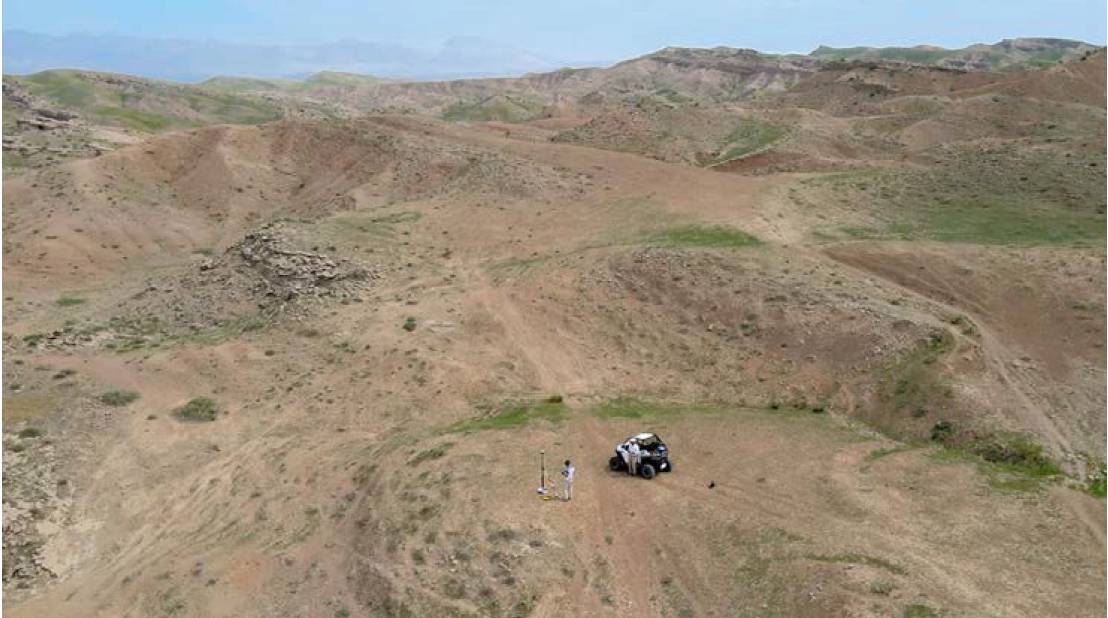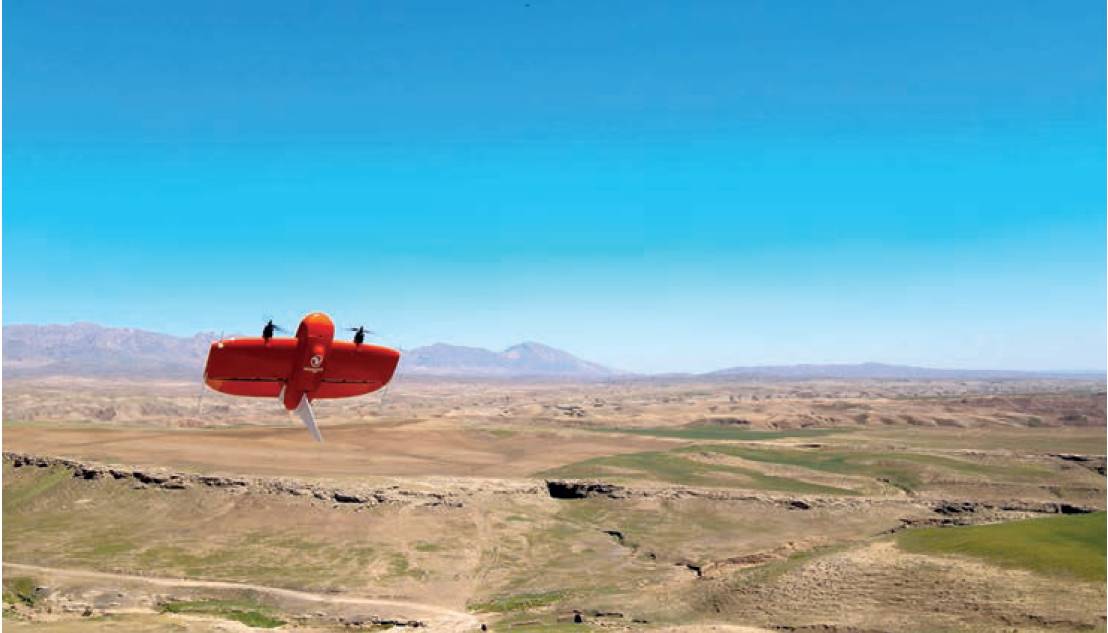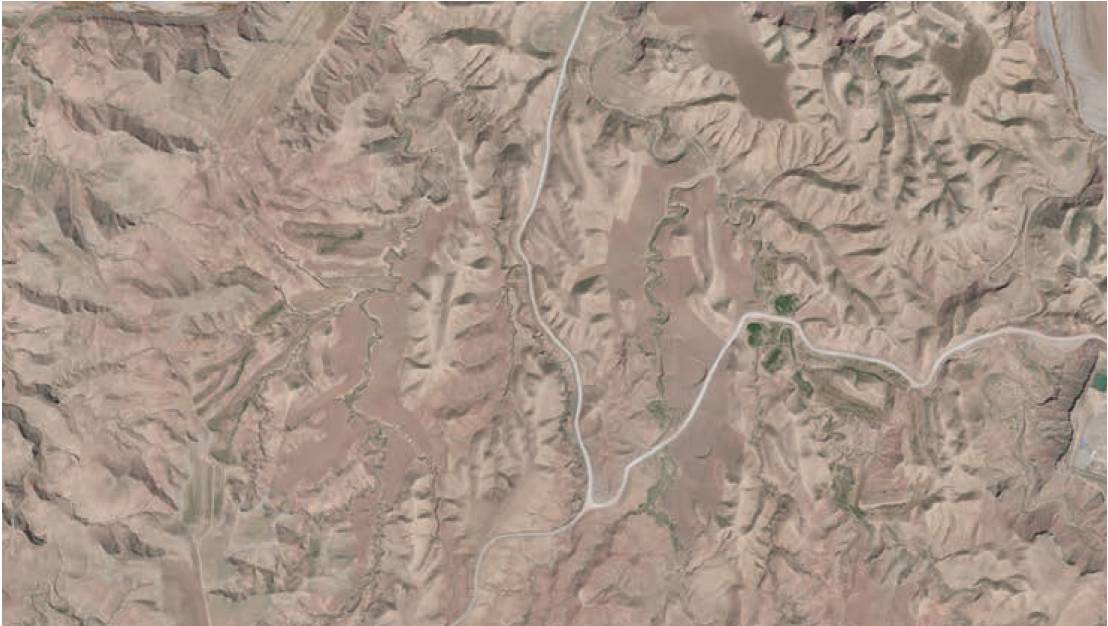Surveying 10,500 hectares with a drone and PIX4Dmatic
Eloise McMinn Mitchell, Pix4D

ONE of the major benefits of drone mapping is that you can use it to access and survey remote areas. Even if there is minimal infrastructure, certain drones can fly large areas and gather data.
This is particularly useful for engineers planning new road or pipeline installations. The scale of land they need to survey to plan new highways is immense, whilst driving to it may not be an option. Aerial solutions with a drone are an ideal solution to this challenge.
GeoDesign Company, based in Sulaimaniyah, Kurdistan-Iraq, is a surveying and highway engineering company. Ako Shwan of GeoDesign has been working in surveying and motorway design for 20 years.
Typical projects worked on include the production of orthomosaics to use for simulating roadway plans. PIX4Dmatic is normally used for these types of projects due to their large scale and datasets of over 5,000 images.
Designed to handle large projects for corridor mapping or analysing big areas as well as terrestrial projects, PIX4Dmatic was used for a recent project in Sulaimaniyah, Kurdistan-Iraq where the company was contracted to survey 10,500 hectares and produce an orthomosaic and digital terrain model (DTM) of the terrain.

Drone surveying in a remote area in Sulaimaniyah, Kurdistan-Iraq. Image cortesy of Pix4D.
Mapping uneven terrain with drones
The area for this project was incredibly difficult to access, however, the region was traversed during the winter, with the temperature not rising above 25-26 o C (77o F), making it possible to work outdoors.
This would not be an option in the summer as the heat would be unbearable.
To begin, an offroad Polaris ranger was used to get to the target area. Once there, the fixed-wing WingtraOne drone was deployed.
Fixed-wing drones can fly for longer periods of time without requiring a change of battery.
They can follow pre-set flight plans, which is useful for a large project such as this.
The orthomosaic from will be used to simulate plans and identify potential hazards to the construction process. Data collection took seven days out of a 60-day project turnaround deadline, with time needed for processing. The image data was transferred to PIX4Dmatic to be processed – 1,000 hectares of imagery – and an orthomosaic created. Once complete, the resulting orthomosaic was shared with the company’s client. Satisfied with the work, processing of the other 9,500 hectares got underway.
Processing took three days with the key outputs required being an orthomosaic and a digital surface model (DSM).
These two deliverables would be shared with the client after the analysis was complete. Digital terrain models (DTMs) were also generated with PIX4Dmapper, for smaller, specific areas to add to the outputs.
Ground control points (GCPs) were set up by driving across the terrain and manually placing and measuring them. Using these GCPs meant the DSM would be accurate, providing the resulting topography to be created at 50cm intervals and checked on-site by taking direct profiles via GNSS to make sure it matched reality.

The WingtraOne flew large areas to ensure the entire aerial map was complete. Image courtesy of Pix4D.
Why drone mapping is suitable for remote areas
The area for this project was incredibly difficult to access, however, the region was traversed during the winter, with the temperature not rising above 25-26 o C (77o F), making it possible to work outdoors.The location of the survey was in a place that had little to no road access. The survey work will be used for the creation of new roads and installations of pipelines and infrastructure. PIX4Dmatic has previously been used for remote surveys in areas with no infrastructure like the Amazon rainforest because the aerial view of a drone combined with photogrammetry gives access to previously inaccessible places.
In the dry, topographically varied region surveyed, drones were the best tool for the job. The topographic map is being used to plan the best path for a new road network that will be the most straightforward to create.
The orthomosaic from this will be used to simulate plans and identify potential hazards to the construction process.
Using aerial drone maps will enable the constructors and clients to effectively plan their development, with the same client looking to take out another contract with the GeoDesign Company to survey a 15,000-hectare area to assist with development plans.

The orthomosaic shows a birdseye view of the area that can be used for planning alongside the DTM. Image courtesy of Pix4D.
The results and the project’s completion in 50 days, rather than 60 was a huge benefit.
The company’s large scale drone survey was an example of what is possible with specialised surveying equipment.
Drone mapping is cheaper than satellite mapping and can pick up more detail. Despite the challenge of surveying a huge area, the company produced reliable, accurate results for GeoDesign’s client that they can use for multiple new projects.
Eloise McMinn Mitchell, Pix4D